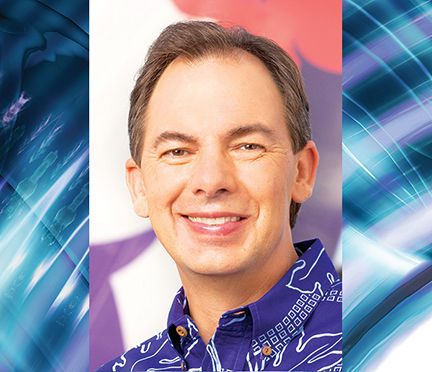WAIPOULI — While Mark Dunkerley enjoys standing before a crowd and chatting about Hawaiian Airlines, there is one area that’s sensitive: The price of oil and how it relates to airfares. “It’s always an awkward thing to talk about,” the
WAIPOULI — While Mark Dunkerley enjoys standing before a crowd and chatting about Hawaiian Airlines, there is one area that’s sensitive: The price of oil and how it relates to airfares.
“It’s always an awkward thing to talk about,” the president and CEO of Hawaiian Airlines said to about 100 people during a Kauai Chamber of Commerce lunch. “It’s not one (question) I particularly enjoy answering.”
But he did Friday at the Courtyard Kauai at Coconut Beach by Marriott.
While the price of a barrel of oil has dropped to about $45 a barrel from $115 in June, airfares haven’t dropped at the same rate, and there’s a reason for that, Dunkerley said.
“We don’t really have the ability to pass it on,” he said. “I can’t tell you there’s a direct correlation between the price of oil and the price of airline tickets.”
He said when the price of oil rises, “airlines end up eating most of that.”
According to a flier Hawaiian handed out at the meeting, even with the recent fuel price drops, fuel prices have cumulatively increased 114 percent since 2002, while neighbor island fares have increased only 58 percent in the same time period.
What really determines ticket prices, he said, is the level of competition in the market place.
“The moment those fares get beyond a competitive level on the up side, somebody comes in,” he said. “We’ve seen that happen from time to time on the island.”
In a 30-minute talk, marked with humor and an easy demeanor, Dunkerley outlined Hawaiian’s plans, challenges and successes.
Hawaiian Airlines, he said, must cover its costs and be profitable so it can invest for the future, “because frankly, our most important job is to be there and at the same time, to manage our franchise long term, not take advantage of short-term opportunity.”
“I can tell you when we approach ticket pricing, looking at fares, we are not taking advantage of our terrific position,” he said.
That’s because Hawaiian believes firmly in taking care of island residents. Out of its record 10.1 million passengers in 2014, about half were kamaaina.
While Hawaiian flies far, providing service to the Mainland, along with Australia, New Zealand, China, Japan and other markets, Dunkerley said locals make the business what it is. What they think and say absolutely matters.
“I emphasize when we think about corporate priorities, taking care of locals is absolutely front and center,” he said.
It’s locals, he said, who provide that sense of community, culture and place for the airline, which enjoyed an adjusted net income of $49.5 million in the third quarter of 2014.
“Our reputation, our brand, our sense of who we are …. is all defined on how we take care of our kamaaina here,” he said.
“That is really an important part of what we do,” he added.
Hawaiian Airlines has a strong influence on Hawaii.
It has 5,400 employees, a payroll of $500 million, purchased $500 million in goods and services in Hawaii, and paid $152 million in taxes. It’s investing $15 billion in new aircraft and another $1.7 billion in infrastructure improvements.
It’s essential the airlines be profitable, he said, so it can pay its bills and prepare for the future.
“The finances of our organization are no different fundamentally than any household finances,” he said.
In 2013, Hawaiian Airlines activity generated 12.4 percent of Hawaii’s gross domestic product, or one dollar of every eight produced in the state.
Hawaiian brought 1.8 million guests to Hawaii in 2013 — 1 million to Oahu, 421,718 to Maui, nearly 260,000 to the Big Island and 143,123 to Kauai.
“It’s rare to find a single enterprise that has that level of impact on a community,” he said.
Hawaiian, he added, has hundreds of employees who live on each of the islands and are involved in many ways.
“I want to help everybody understand the contributions that are made chiefly by our employees,” he said.
Hawaiian will continue looking into markets that will bring more visitors to the islands, as it is aware there are island communities dependent on inbound tourists. Hawaiian is projecting about 8 percent in growth next year.
In looking around the room, Dunkerley said, “The majority of you depend to some degree on our tourism industry here.”
In answering a question from Kauai Chamber President Randy Francisco about Hawaiian’s mileage plan, Dunkerley said there are no plans to change it.
“We’ve made the decision to stick with the you-fly-the-miles, you-get-the-mileage approach,” he said.
Some airlines have gone to mileage programs based on ticket price rather than miles flown.
“My personal advice is, don’t fly on Delta,” he said, which drew laughs from the crowd.


